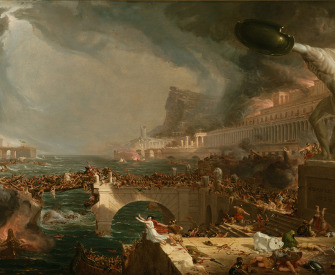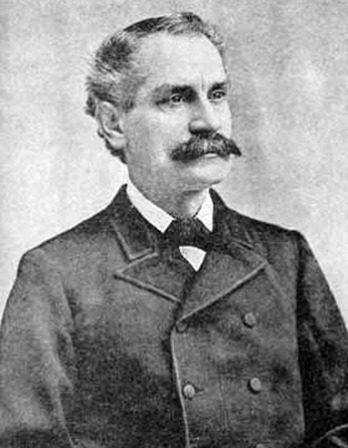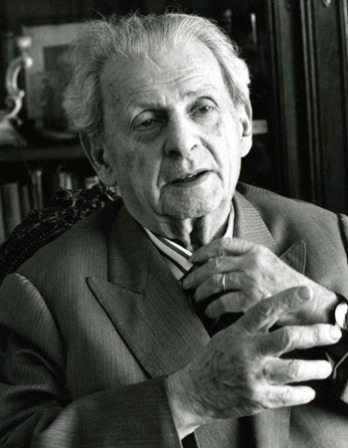About the first of March we anchored off San Francisco, near the USS Ohio. As was the universal custom of the day, we, the crew of the California, deserted her; and she lay for months unable to make a trip back to Panama, as was expected of her. As soon as we reached San Francisco, the first thing was to secure an office and a house to live in. The weather was rainy and stormy, and snow even lay on the hills back of the Mission. Captain Folsom, the quartermaster, agreed to surrender for our office the old adobe custom house on the upper corner of the plaza as soon as he could remove his papers and effects down to one of his warehouses on the beach, and he also rented for us as quarters the old Hudson Bay Company house on Montgomery Street, which had been used by Howard & Mellus as a store, and at that very time they were moving their goods into a larger brick building just completed for them. As these changes would take some time, General Smith and Colonel Ogden, with their wives, accepted the hospitality offered by Commodore Jones on board the Ohio. I opened the office at the custom house, and Gibbs, Fitzgerald, and some others of us, slept in the loft of the Hudson Bay Company house until the lower part was cleared of Howard’s store, after which General Smith and the ladies moved in. The ladies had no maid or attendants; and the general, commanding all the mighty forces of the United States on the Pacific coast, had to scratch to get one good meal a day for his family! General Smith was a gentleman of fine social qualities, genial and gentle, and joked at everything. Poor Mrs. Smith and Mrs. Ogden did not bear it so philosophically. Gibbs, Fitzgerald, and I could cruise around and find a meal, which cost three dollars, at some of the many restaurants which had sprung up out of redwood boards and cotton lining, but the general and ladies could not go out, for ladies were rara aves at that day in California. That was a dull, hard winter in San Francisco—the rains were heavy, and the mud fearful. I have seen mules stumble in the street and drown in the liquid mud! Montgomery Street had been filled up with brush and clay, and I always dreaded to ride on horseback along it because the mud was so deep that a horse’s legs would become entangled in the bushes below, and the rider was likely to be thrown and drowned in the mud. The only sidewalks were made of stepping stones of empty boxes, and here and there a few planks with barrel staves nailed on. All the town lay along Montgomery Street, from Sacramento to Jackson, and about the plaza. Gambling was the chief occupation of the people. While they were waiting for the cessation of the rainy season, and for the beginning of spring, all sorts of houses were being put up, but of the most flimsy kind, and all were stores, restaurants, or gambling saloons. Any room twenty by sixty feet would rent for a thousand dollars a month. I had, as my pay, seventy dollars a month, and no one would even try to hire a servant under three hundred dollars. Had it not been for the fifteen hundred dollars I had made in the store at Coloma, I could not have lived through the winter. About the first of April the steamer Oregon arrived, but her captain (Pearson) knew what was the state of affairs on shore, and ran his steamer alongside the Ohio at Sausalito, and obtained the privilege of leaving his crew on board as “prisoners” until he was ready to return to sea. Then, discharging his passengers and getting coal out of some of the ships which had arrived, he retook his crew out of limbo and carried the first regular mail back to Panama early in April. In regular order arrived the third steamer, the Panama, and as the vessels were arriving with coal, the California was enabled to hire a crew and get off. From that time forward these three ships constituted the regular line of mail steamers, which has been kept up ever since. By the steamer Oregon arrived out Maj. R. P. Hammond, J. M. Williams, James Blair, and others, also the gentlemen who, with Major Ogden, were to compose a joint commission to select the sites for the permanent forts and navy yard of California. This commission was composed of Majors Ogden, Smith, and Leadbetter, of the army, and Captains Goldsborough, Van Brunt, and Blunt, of the navy. These officers, after a most careful study of the whole subject, selected Mare Island for the navy yard, and Benicia for the storehouses and arsenals of the army. The Pacific Mail Steamship Company also selected Benicia as their depot. Thus was again revived the old struggle for supremacy of these two points as the site of the future city of the Pacific. Meantime, however, San Francisco had secured the name. About six hundred ships were anchored there without crews, and could not get away, and there the city was, and had to be.
From his Memoirs. Named Tecumseh after the Shawnee chieftain, Sherman fought the Seminoles in Florida in the 1840s. Unlike many Civil War generals, he saw no action in the Mexican-American War, stationed instead in California as an administrative officer. In 1846 San Francisco was still known as Yerba Buena and boasted a population of 458; the discovery of gold in 1848 soon caused the population to swell to more than 100,000.
Back to Issue





